Bihar is holding multiple glorious tags for its tourism sector. Be its rich cultural roots, traditions, religious destinations or heritage sites listed under UNESCO though drags the attention of visitors all over the world. Many sentiments of Hinduism, Jainism and Buddhism devotees are attached from Bihar. The reason for this attachment is the Bodh Gaya – the religious site of Bihar & Mahabodhi Temple – where Buddha Attained Nirvana.
Readers, in this article, we will learn about its religious beliefs & understand why you should visit Mahabodhi Temple once in your life during your trip to Bodh Gaya, Bihar.
Before moving towards Mahabodhi temple, take a quick tour of Bodh Gaya –
Bodh Gaya: Birthplace of Gautama Buddha
Bodh Gaya is a religious city, located on the banks of Lilanjan River at the northeastern zone of Bihar. Popular as Gaya, this destination holds numerous ancient temples and spots associated with religious sentiments of devotees of any religion. A faint Buddha Statues attracts every visitor. It is considered a significant site for Hindus & followers of Buddhism as they sink ashes of their ancestral in River Ganga and pray for them.
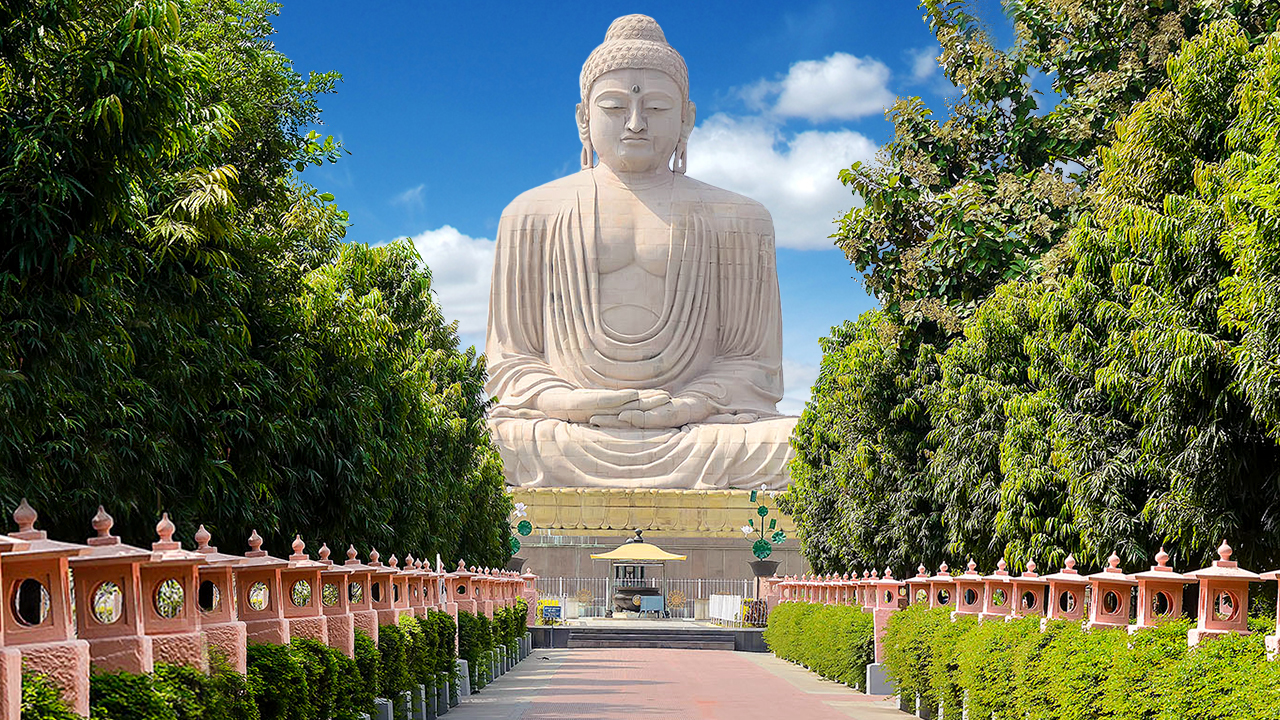
It is believed that they achieve salvation (Moksha) from the circle of life and death. Pitru Paksha Mela also held here for devotees. Visiting Gaya is also a great choice as the land showcase the best structures that emphasise the architectural majesty of a historical era of India.
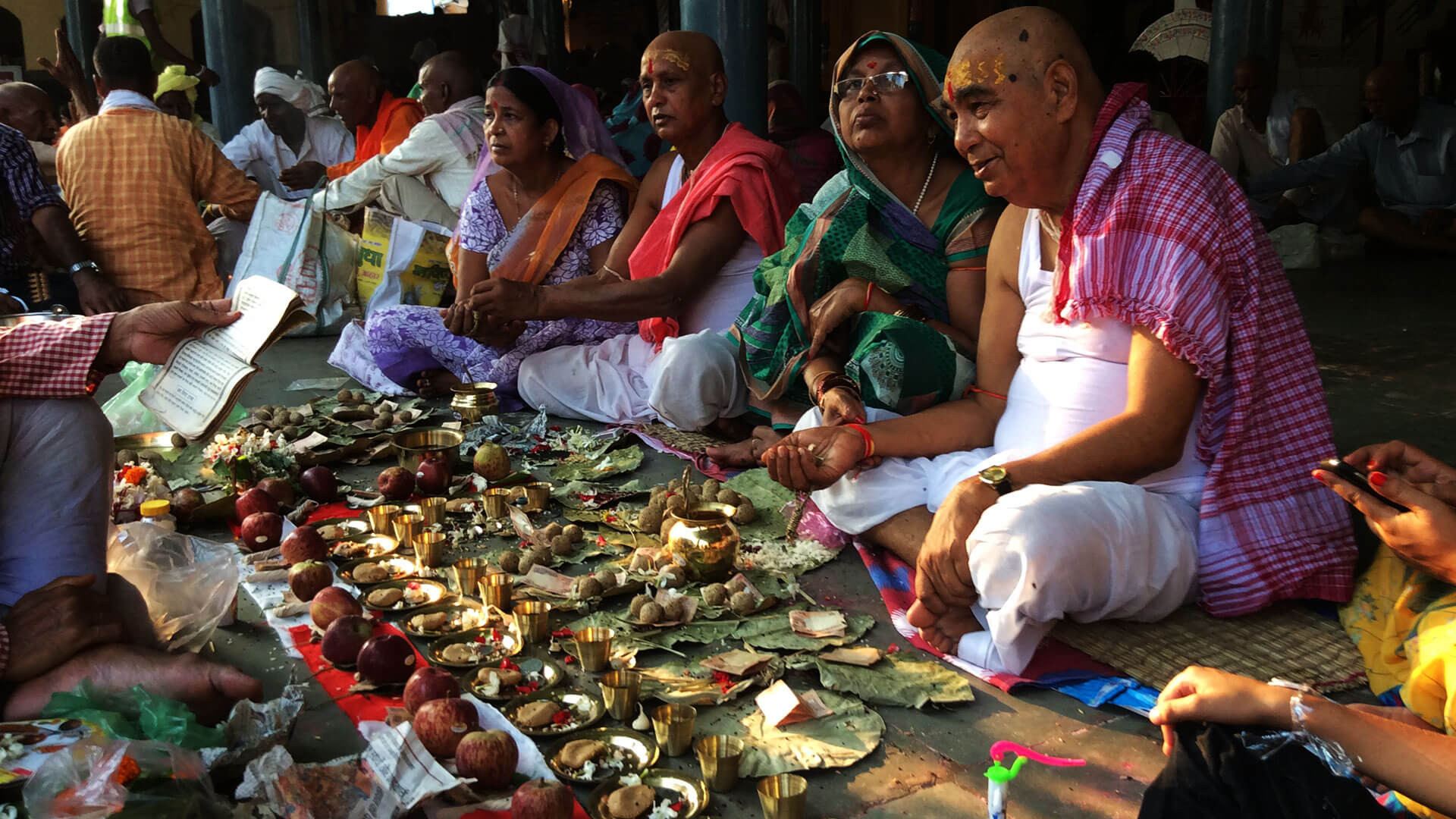
A fine example of architectural epitome is Mahabodhini Temple and Nalanda University. The place has an appeal for nature lovers as it is situated in a breathtaking setting in the middle of hills, offering a picturesque landscape that is both serene and exciting.
Also Read: Top 5 Places To Visit In Bihar
Mahabodhi Temple: Here Buddha Attained Nirvana
The Mahabodhi temple complex is the most prominent religious site and renowned for holding influential cultural heritage of India. This ancient heritage is one of the four holy sites and most recognised spot as it is associated with the life of the Lord Buddha. This makes its a prime tourist appeal for foreign sightseers.
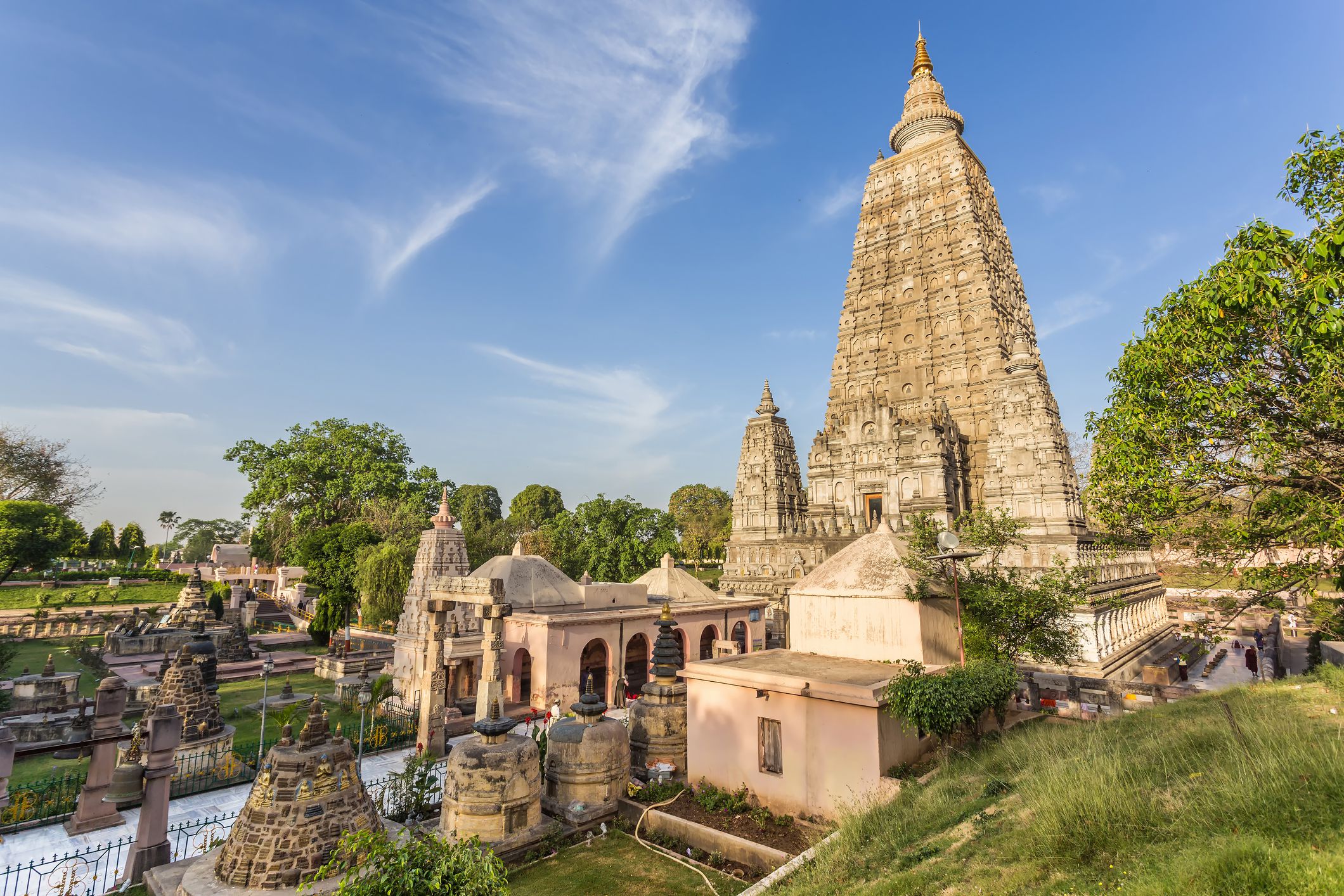
The Mahabodhi Temple also is known as the Great Awakening Temple. Inside Mahobodhini temple, a 9th-century ‘Shivalingam’ is also discovered. In June 2002, the temple complex was declared a UNESCO World Heritage Site. All of its religious artefacts have since been legally protected.
Tales of Mahabodhi Temple
Mauryan Emperor Ashoka who famously converted to Buddhism built a temple in Bodh Gaya which is now known as Mahabodhi Temple. The first temple of the complex was built in the 3rd century B.C around 250 years after the Buddha attained enlightenment. The present temple which you see today dates back from the 5th & 6th centuries; later some renovation was done in the 7th century. The Mahabodhi temple complex is one of the first Buddhist temples to be constructed completely of brick and now it is proudly standing tall in India portraying the heritage of Gupta period.
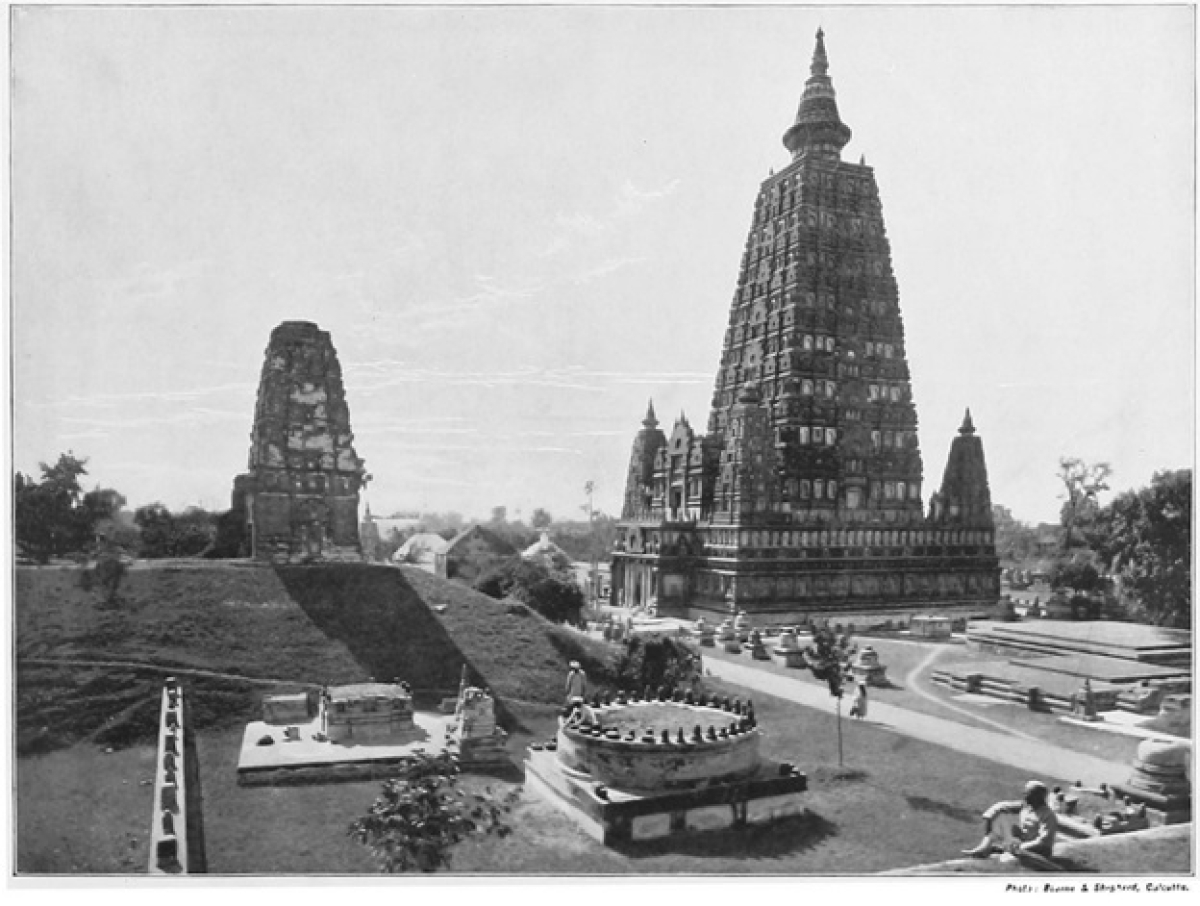
According to historical facts, it was in this place where Gautama Buddha sat under a fig tree and meditated, finally gaining enlightenment and becoming Buddha. This site is basically the birthplace of the ideologies and beliefs of Buddhism. Thus holding an influential position in the hearts of Buddhism devotees.
Also Read: Akshardham Temple: Epitome of Spirituality & Culture at Delhi
Design Details of Mahabodhi Temple
The original structure of the temple was made primarily of brick, wrapped with stucco. However, this structure has survived many years, against the odds of its lifeline. A gold-painted Buddha statue is installed in the ancient temple’s sanctum shrine and is made of black stone. The Pala kings of Bengal built it. Here Buddha is seen sitting in the Bhumisparsa Mudra Asana. Two distinct styles of railings oh height 2m on all 4 sides surround the Mahabodhi temple.
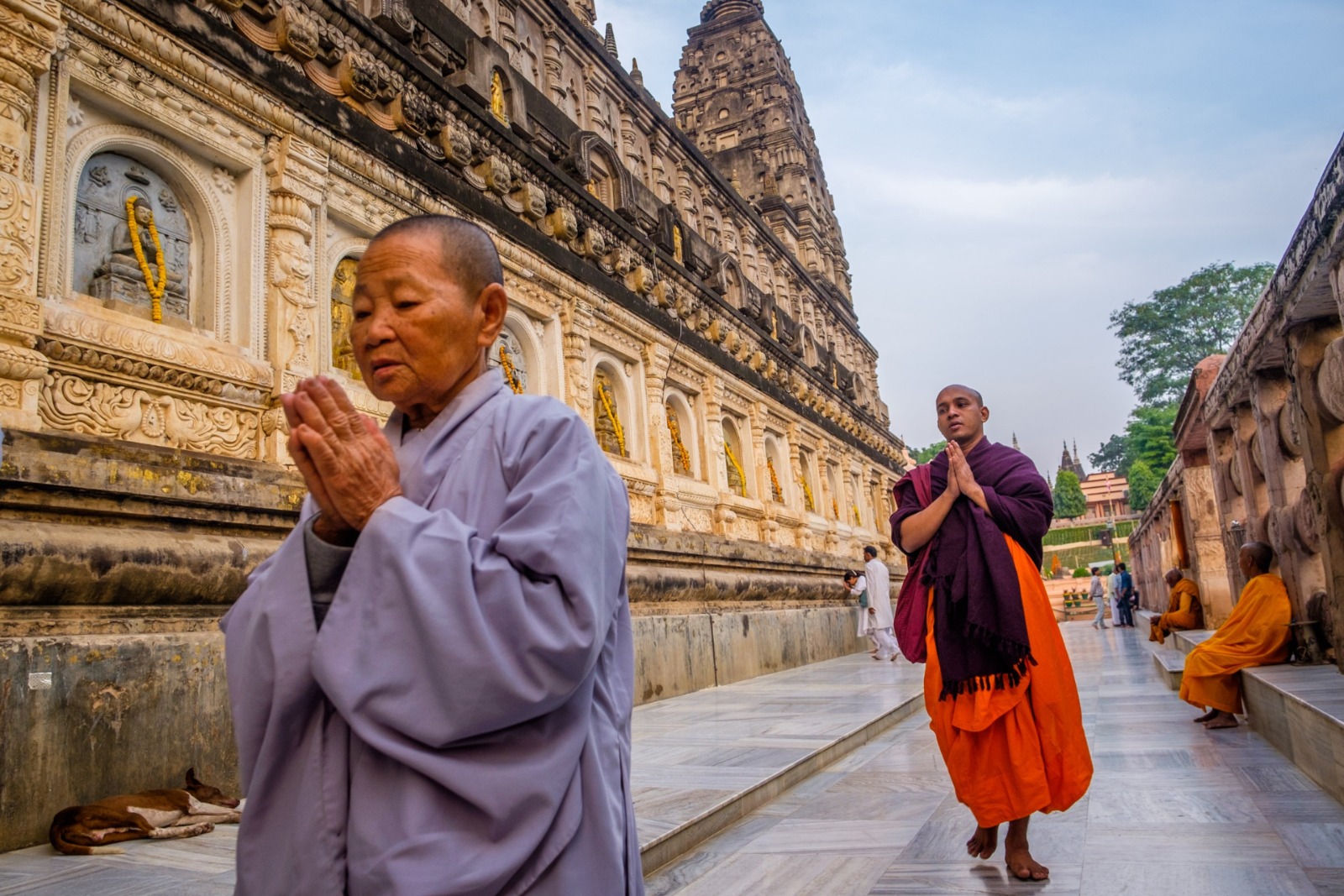
The old railings are made of sandstone, dating back to 150 BC, and have depictions of elephants with Goddess Laxmi and a chariot pulled by 4 horses by Lord Surya. Proudly portraying the architectural splendour of the past, this temple is standing on a 48 sq feet tall pyramidal basement. The Chakras assembled at the top of Mahabodhi temple preach freedom of religion.
The Bodhi Tree of Enlightenment
Bodhi Tree located around 0.09 km from the temple. It is the most famous place as Gautama Buddha attained Enlightenment under this Bodhi Tree for 7 days, thus considered sacred by followers of Buddhism. Later, on the spot where he had stood, a shrine known as Animisalocana Cetiya was erected. In the 7th century, a small temple was also constructed near the Bodhi tree.
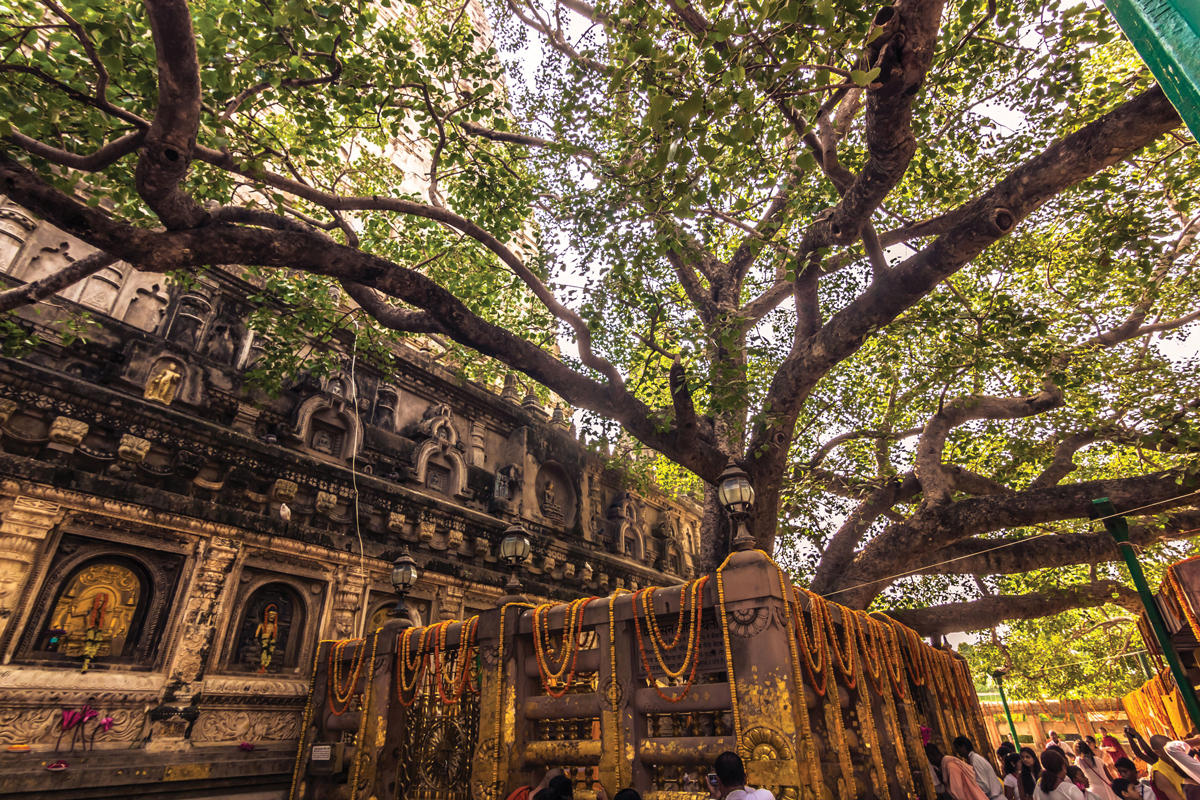
The tree is on the southern side of the temple of Mahabodhi and is not the point of origin where Buddha’s enlightenment occurred but the next generations of the tree. The wife of Emperor Ashoka has forcibly removed the original tree, as she was jealous of her husband’s devotion in Buddhism. The tree was again destroyed in 600 AD, but King Purnavarm planted a sapling from the original tree in 620 AD.
Other Top Attractions Near Mahabodhi Temple
- Thai Monastery located around 0.70 km from the temple.
- Chinese Temple located around 0.42 km from the temple.
- Royal Bhutan Monastery located around 0.85 km from the temple.
- Archaeological Society of India Museum located around 0.49 km from the temple.
- Vishnupad Temple located around 10.4 km from Mahabodhi Temple, it is also renowned in Gaya so you can pay a visit too.
- Muchalinda Lake is located to the right of Mahabodhi Temple. It is believed that Lord Buddha performed meditation here.
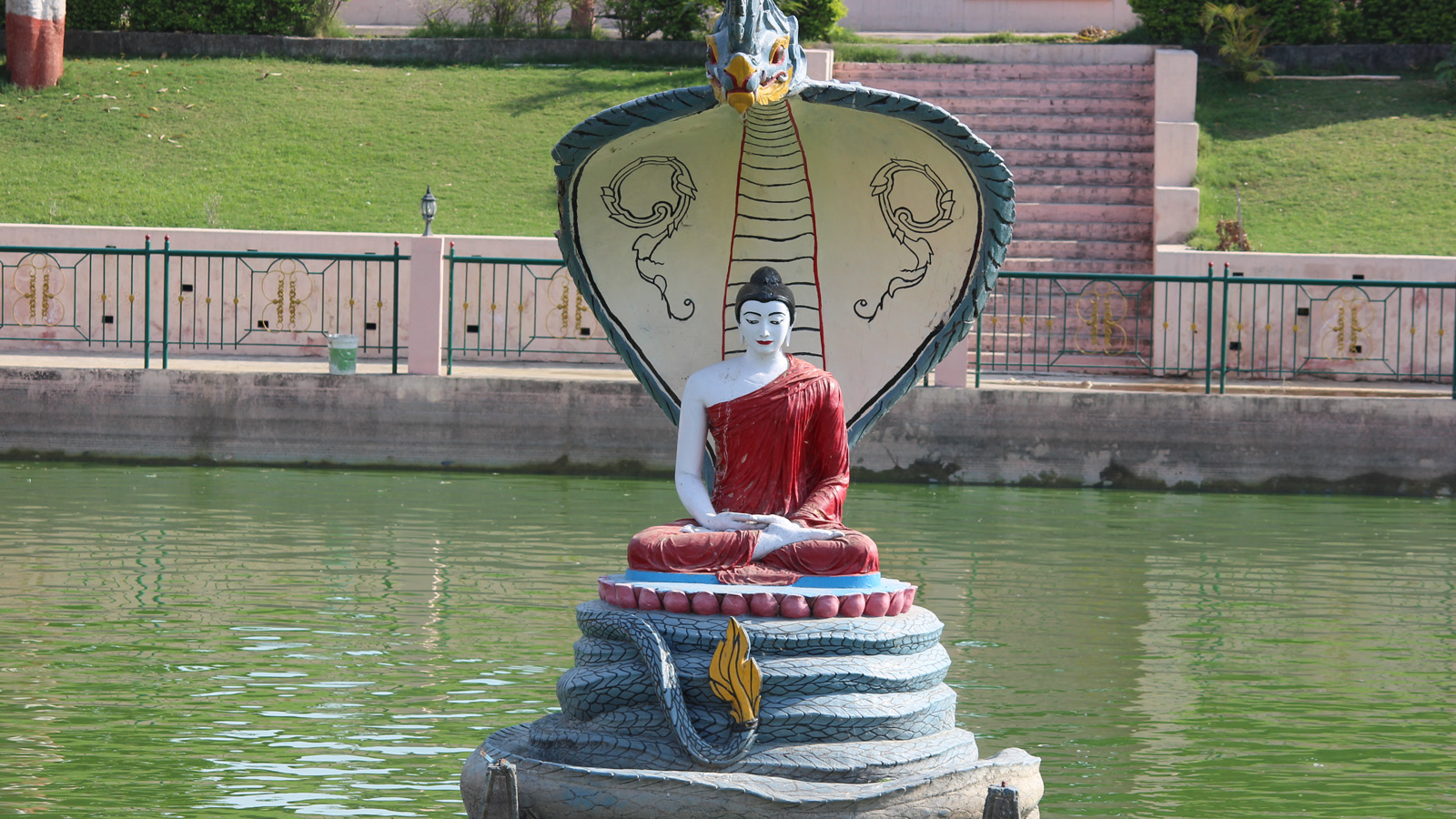
Ways of Reaching Mahabodhi Temple
From the major cities & towns of Bihar, Mahabodhi Mahavihara Temple is easily accessible. The nearest airport is located in Patna, which is 96 km from Gaya. Gaya Railway Station, around 16 km is the closest railway station to reach the Mahabodhi temple. From there you can take an Ola Cab, auto or rent vehicle from station to reach the temple. The town is also connected with major cities by a network of roads. You can take a bus from Gaya Bus Stand, which is around 12.4 km from the temple.
Visiting hours
You can visit the Mahabodhi temple between 5 AM to 9 PM and the entry inside the temple is free, but those visitors who want to shoot inside the complex they have to pay around INR 100 to 300.
Note: Before entering the Mahabodhi Temple, it is mandatory for all visitors to deposit their cell phones and other devices without paying any cost at baggage counter.

